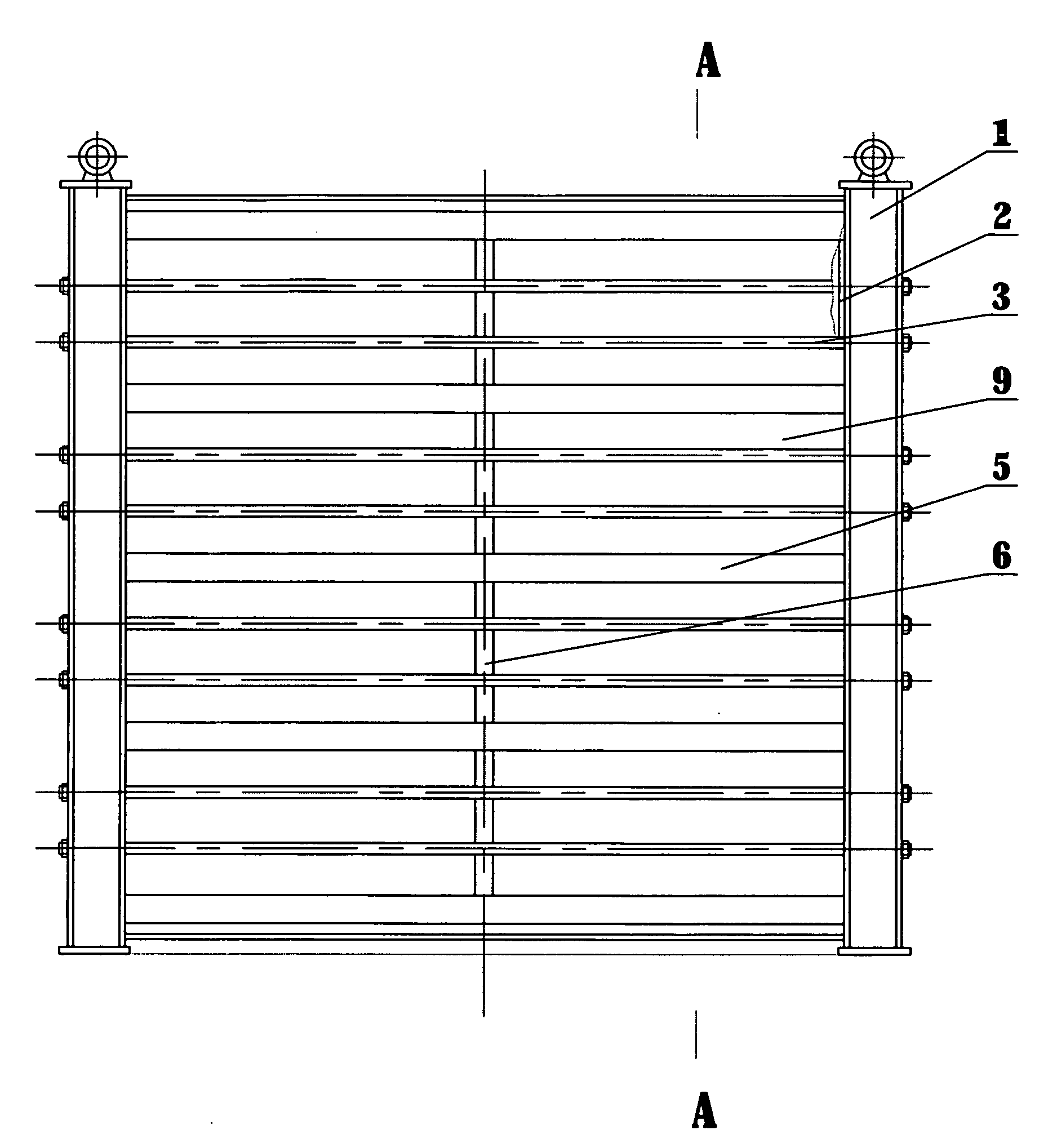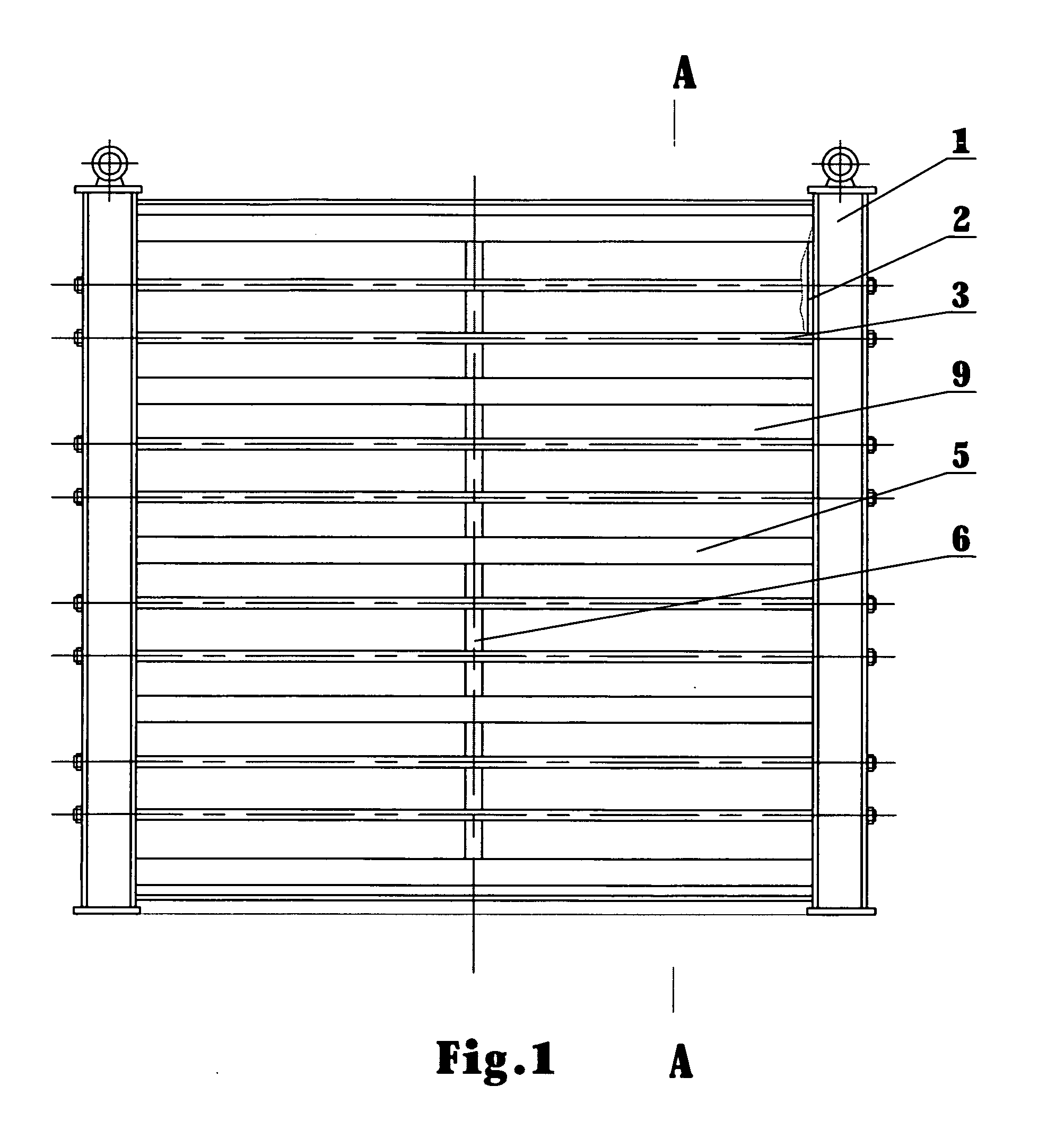Liquid treatment module
a technology of liquid treatment module and liquid treatment device, which is applied in the direction of centrifuges, separation processes, filtration separation, etc., can solve the problems of increasing the complexity of the treatment system, high price of ion exchange resin, and complex maintenance of equipment, so as to reduce the operating current, improve the liquid handling capability, and reduce the effect of operating curren
- Summary
- Abstract
- Description
- Claims
- Application Information
AI Technical Summary
Benefits of technology
Problems solved by technology
Method used
Image
Examples
Embodiment Construction
[0030]The liquid treatment device of the present invention is shown in FIGS. 1 to 4, including the power distribution panels 2, electrode plates, and frameworks 5 with two side end plates 1.
[0031]As shown in FIG. 1, the two power distribution panels 2 are connected to the end plates 1 through the connector 3. Inside of the power distribution panels 2 is the electrode plate 24. The power distribution plates 2 are connected with the DC power supply through electrical wires. The power distribution panels 2 of the present invention may be conductive metal plates, and connect to the DC power supply through the electrical wires.
[0032]Alternatively, as shown in FIGS. 5 and 6, the power distribution plate can be made of the insulation plates 21 and sequentially on top of the inner side of the insulation plate 21, the conductive plate 22, the collector plate 23 and the electrode plate 24. There is also a transition layer 26 on the surface of the electrode plates 21. The conductor 22 is ancho...
PUM
| Property | Measurement | Unit |
|---|---|---|
| Flow rate | aaaaa | aaaaa |
| Electrical conductor | aaaaa | aaaaa |
Abstract
Description
Claims
Application Information
 Login to View More
Login to View More - R&D
- Intellectual Property
- Life Sciences
- Materials
- Tech Scout
- Unparalleled Data Quality
- Higher Quality Content
- 60% Fewer Hallucinations
Browse by: Latest US Patents, China's latest patents, Technical Efficacy Thesaurus, Application Domain, Technology Topic, Popular Technical Reports.
© 2025 PatSnap. All rights reserved.Legal|Privacy policy|Modern Slavery Act Transparency Statement|Sitemap|About US| Contact US: help@patsnap.com



